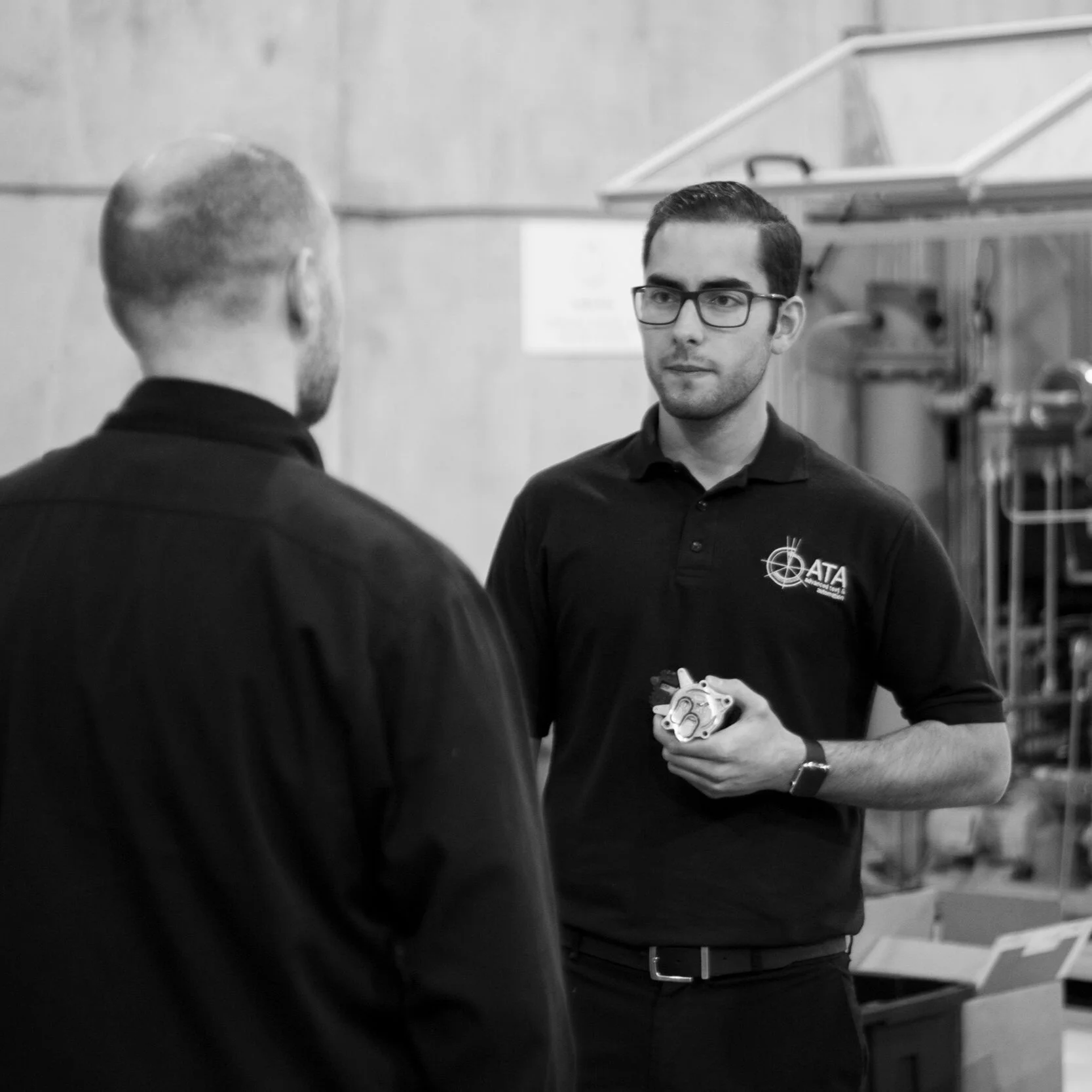What is Torsional Vibration?
The trend with internal combustion engines is that they are becoming smaller and more efficient by using turbos and/or superchargers to effectively increase the specific power per swept volume of the pistons. This increase in specific power will create significantly larger stresses on crank shaft driven components, especially the oil pump since it is typically driven directly by the crankshaft. The source of the stresses is created by the sudden impulses from combustion gases and the inertia of the cranks rotating geometry. For every combustion event the crankshaft twists and then rebounds like an elastic band. A series of these violent twisting motions occurs a number of times during one crankshaft revolution. This twisting motion is called torsional vibration.
Torsional vibration has been known to fail the gear rotor of oil pumps. Typically, the failure occurs during testing on an engine dynamometer at the OEM’s facility. A failure at this point is not only very expensive and time consuming, but it also doesn’t look good for the reputation of the oil pump supplier.
The onus should be on the oil pump supplier to prove their product is fit for purpose when supplied to the OEM for testing. There are certain design considerations and theoretical stress calculations that can be applied, but the ultimate validation is to test the component. It is not necessary to have an engine dynamometer on hand to test a component. Even if one was available, the torque pulsations from one engine would differ compared to another, so this would not be ideal anyway.
Now some of you are probably wondering, “well why can’t we just replicate the output of an engine?”. Well, you are on to something, but unfortunately it is a bit more difficult than you might think. Imagine rotating a tube at constant speed, and while the tube is rotating add a jittering movement. The difficulty is being able to cause and impose the torsional pulsations onto the component in a very short timeframe, since the engine speed will rotate between 10 and over 100 times per second, so the pulsation required must occur within about one thousandth of a second. To do this a large torque is required to accelerate the drive shaft (representing the crankshaft) in the clockwise and anticlockwise directions while the component under test is being rotated at a nominal speed.
At ATA, we are developing a new module to simulate torque pulsations. We have researched the market and there are torque pulsation systems out there, but these were typically developed for measuring torque out-of-balance of power generation turbines that have shafts with diameters in the order of 200 mm. These machines are extremely expensive and are not well-suited for automotive applications. Our new module has been specifically designed to recreate the torsional vibrations an automotive combustion engine would enact on a powertrain component. For example, an engine oil pump will be able to function by pumping oil in its normal operating mode, while at the same time experiencing torsional vibrations on it's drive shaft.
ATA has a long track record of providing robust oil pump durability testing systems. This new module will be available as an option on our mechanical pump test systems in the near future. The amount of torsional vibration will be able to be controlled so that the component under test will be able to be tested with different nominal speeds and torque pulsation profiles.
In summary, we have made great progress in the development of a module that could reduce the need for engine dynamometers during the product development of powertrain components.
If you have any questions about this module and/or would like to join us in becoming industry leaders in innovation, then reach out to us. If you have found this post informative and enjoyable then tell us and others about it. Just leave a comment below and/or share it to your social media platforms. Either way we appreciate your digital attendance and look forward to producing more content like this.
Learn more at https://www.advancedta.com/ata-dynamics
RELATED CONTENT





Torsional Vibration in shafts and other mechanical systems
The torsional vibration of a crank or motor shaft is an important factor in the suitability and reliability of a system design. Finite element modelling can predict the natural vibration and forced vibration based on the expected harmonics and speeds. However, modelling can only go so far, and oftentimes a measurement setup is required, such as ENSURE, for physical validation of the key assumptions.